 Editors: Anping Xu et. el., pages 690, price: 130
EUR
Editors: Anping Xu et. el., pages 690, price: 130
EUR[Contents], [Order], [Full PDF of the Papers], [Help]
 Editors: Anping Xu et. el., pages 176, price: 70 EUR
Editors: Anping Xu et. el., pages 176, price: 70 EUR[Contents], [Order], [Full PDF of the Papers], [Help]
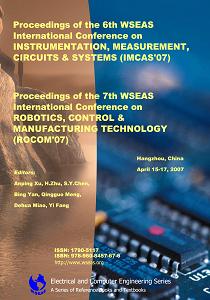 Editors: Anping Xu et. el., pages 340,
price: 80 EUR
Editors: Anping Xu et. el., pages 340,
price: 80 EUR[Contents], [Order], [Full PDF of the Papers], [Help]
Conference Statistics:
Submitted papers: 893
Accepted papers: 408
Pictures from the Conferences. Click a picture to see a larger view-->
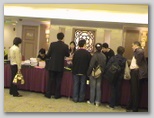
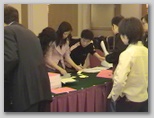
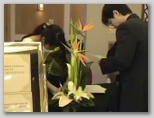
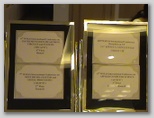
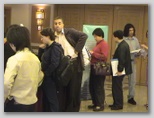
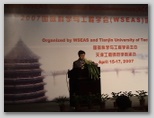
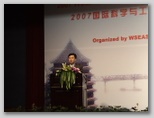
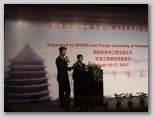
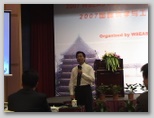
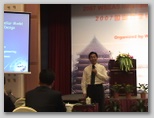
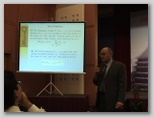
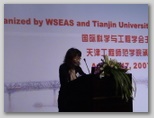
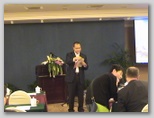
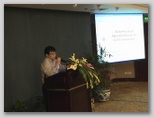
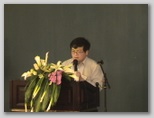
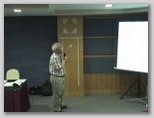
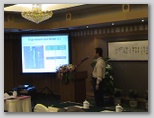
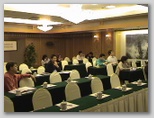
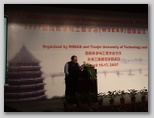
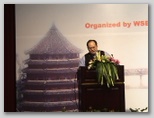
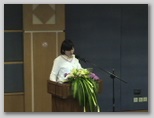
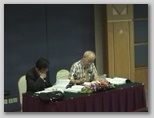
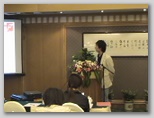
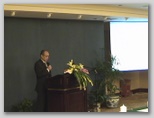
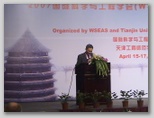
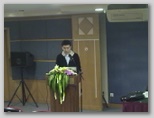
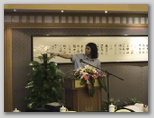
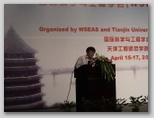
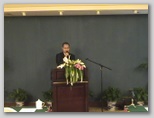
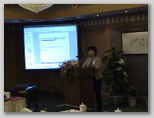
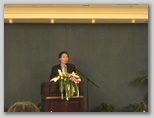
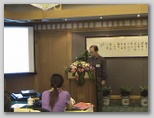
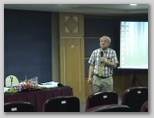
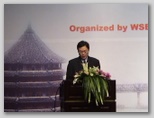
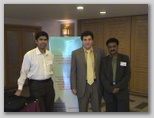
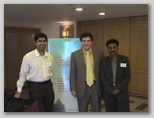
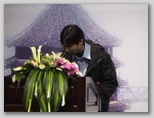
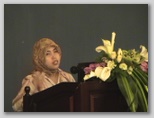
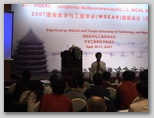
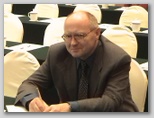
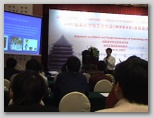
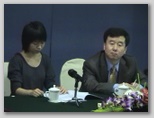
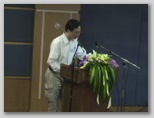
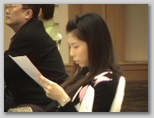
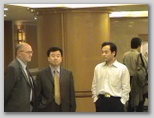
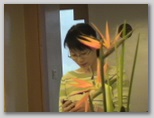
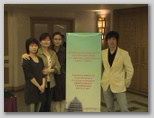
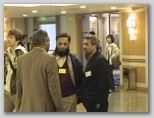
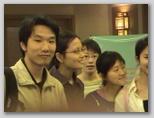

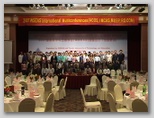
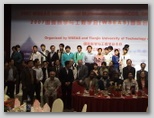
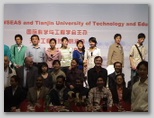
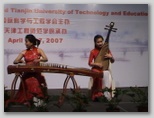
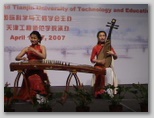
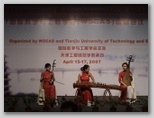
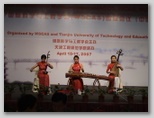
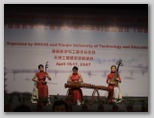
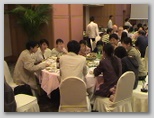
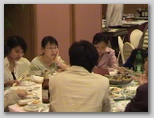
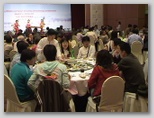
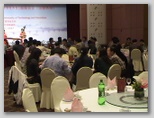
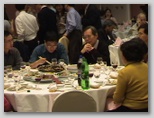
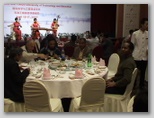
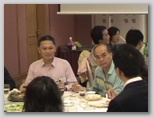
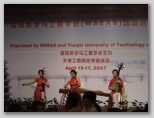
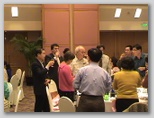
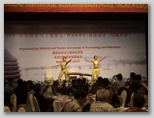
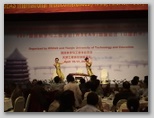
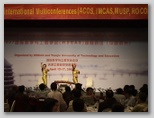
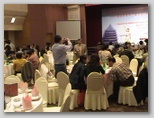
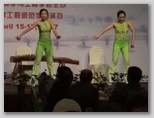
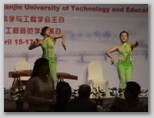
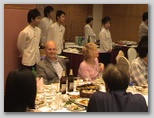
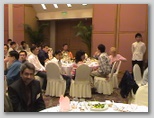
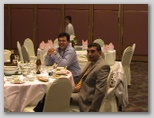
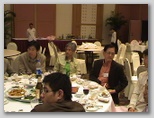
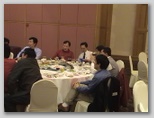
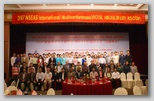
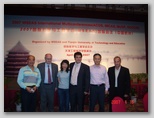
.: Location: About Hanhzhou:
Hangzhou is the capital of Zhejiang province and its political, economic and
cultural center. With its famous natural beauty and cultural heritages, Hangzhou
is one of China's most important tourist venues.
The City, the southern terminus of the Grand Canal, is located on the lower
reaches of the Qiantang River in southeast China, a superior position in the
Yangtze Delta and only 180 kilometers from Shanghai. Hangzhou has a subtropical
monsoon type climate with four quite distinct seasons. However, it is neither
too hot in summer nor too cold in winter making it a year round destination.
The West Lake is undoubtedly the most renowned feature of Hangzhou, noted for
the scenic beauty that blends naturally with many famous historical and cultural
sites. In this scenic area, Solitary Hill, the Mausoleum of General Yue Fei, the
Six Harmonies Pagoda and the Ling Yin Temple are probably the most frequently
visited attractions. The "Ten West Lake Prospects" have been specially selected
to give the visitor outstanding views of the lake, mountains and monuments.
.: Scientific Part
Review Process: Each paper was reviewed at least by 3 independent
reviewers. The WSEAS Secretariat sent each paper to 5 reviewers. Some papers
received reviews from 5 different referees. The WSEAS Secretariat forwarded
these comments by personalized emails to the responsible for the correspondence
author. The full list of the reviewers will be available in the web page:
http://www.worldses.org/reviewers.htm
.: What is the Permanent Procedure for additional Journal
publication for a very small number of High-Quality Papers presented in WSEAS
Conferences.
One month after the conference, each author of a high-quality papers (after the
suggestion of the Conference Organizers) received the following email:
Dear Author,
One month after the conference, we have started the evaluation of the papers
from the conference in China (Hangzhou) for possible inclusion of their extended
and enhanced versions in the WSEAS Journals.
INTRODUCTION: You know that our goal is to maintain very strong international
journals, to increase the impact of our beloved WSEAS Transactions, really top
journals as they really are. To this end, we need only high quality papers,
breakthrough works of archival value, i.e. papers that are well written from any
point of view, completed studies (with their numerical examples or experiments
that must be compared with the previous results in the literature), excellent
english and of course correct WSEAS format. The papers also must be
substantially extended version of the paper that was presented in the conference
(with more than 40% new material). We need papers that will attract the
attention of other scholars citing them increasing our impact. In the next few
years, the WSEAS transactions must be in every academic library, in every corner
of the earth. To this end, we need your high quality contribution.
HOW TO PROCEED:
a) Check very carefully if your idea is really important, breakthrough in
your field and can appear in a Journal of the quality and the level of the WSEAS
Transactions. If you doubt, do not send it so easily. Your paper must not be
only a good idea. It must be a complete study with theoretical background,
complete bibliographical references; without grammatical and syntactical errors.
For theoretical works: full comparison with previous published papers is
necessary. We need numerical examples, applicability of the method, originality,
novelty and directions for future research. For experimental or computational
works: full comparison with previous published papers is necessary. We need real
experiments with the necessary documentation, while for computational work, we
need full benchmarks. Of course along discussions for the applicability of the
method, originality, novelty and directions for future research.
b) Complete the extended version of your paper until June 30
and send it until June 30, by email to Prof. Nikos Bardis:
bardis *at* worldses.org
(replace *at* with @ and remove blanks)
You must receive an email notification from Nikos after your submission. Nikos
Bardis will check: if it is really an extended paper of our conference and if it
fulfils the requirements of the previous paragraph a). If not, he is entitled to
reject it from this early stage informing you properly.
c) If Prof.Bardis verifies that your paper fulfils the requirements of the
paragraph a), then he will send it to 3 independent Reviewers outside your
country. The positive answer of the 3 reviewers is necessary (i.e. 2 yes and
1 no implies NO, i.e.rejection).
d) Prof. Nikos Bardis will collect the reviewers' remarks and will send them
again to you for acceptance/ acceptance after minor revision/ acceptance after
major revision / rejection
e) Possibly new rounds of review will be needed
f) No additional fee is needed in case of acceptance.
g) Some authors (fortunately very few for the WSEAS Congresses) that did not
show up in the conference (in China) to present their paper are not eligible to
send extended version to Prof. Bardis. (Of course,
they can send, at any time of the year, their papers via the normal procedure of
the WSEAS Journals directly to the Editors-in-Chiefs
http://www.worldses.org/journals/index.html )
After all this procedure, the accepted papers that come from WSEAS Conferences
in Hangzhou
will be published in
* WSEAS Transactions on SYSTEMS
* WSEAS Transactions on COMPUTER RESEARCH
IF: you want another journal, or if you miss the deadline of June 30, or if you
did not present your paper in the conference THEN: you can upload it quite
independently as regular paper from the WSEAS Site for the Journals:
http://www.worldses.org/journals/index.html
The final list of the papers must have the approval of Prof. Nikos Bardis, 3
Reviewers, and of course the Editor-in-Chief of the particular Journal. i.e. 5
persons: 3 Reviewers, Guest Editor and the Editor-in-Chief of the particular
Journal. We hope to help to to maintain the WSEAS Transactions, top journals in
the electrical and computer engineering
WSEAS sent a full report of the whole review process and the whole
correspondence to the following international indexes that have recognized
officially the Validity and the Reputation of the WSEAS Conferences: (see also:
www.worldses.org/indexes )
.: Best Student Papers:
The Organizing Committee received the forms that the Session Chairmen filled in
after the end of their Sessions and after additional evaluation and discussion
decided the following.
The Criteria were
a) originality and scientific impact
b) good presentation
c) paper presented by a student
The results of this evaluation are:
Conference: ACOS
Won by: Sigma On Kee Lee
Title: Automatic Tag Recommendation for the Web 2.0 Blogosphere using
Collaborative Tagging and Hybrid ANN Semantic Structures
Authors: Sigma On Kee Lee, Andy Hon Wai Chun
Conference: IMCAS
Won by: Min Li Huang
Title: An Adaptive EDCA TXOP with Rate Adaptation For QoS Provision
Authors: Min Li Huang, Seungbeom Lee, Sin-Chong Park
Conference: ROCOM
Won by: Yan Pan
Title: Kinematic Analysis of a Novel 3-DOF Parallel Robot with 4 Limbs
Authors: Wang Zhongfei, Qian Xianfa, Ji Shiming, Wan Yuehua, Pan Yan
Conference: MUSP
Won by: Shangqi Bao
Title: Automatic Sightline Stabilisation in Noisy Imagery
Authors: Shangqi Bao, Jason F. Ralph
***************
***************
Indexes:
PROCEEDINGS: The Proceedings related to the Conference are covered by:
1. ISI (ISINET)
2. INSPEC (IET, former IEE)
3. CSA (Cambridge Scientific Abstracts)
4. ELSEVIER and Elsevier Bibliographic Database
5. ZENTRALBLATT
6. ULRICH
7. MATHSCINET of AMS (American Mathematical Society)
8. MATHEMATICAL REVIEWS of AMS (American Mathematical Society)
9. Directory of Published Proceedings
10. Computer Science Bibliography Administrator
11. American Chemical Society and its Index: Chemical Abstracts Service
12. European Library in Paris (France)
13. DEST Database (Australia)
14. Engineering Information
15. SCOPUS
16. EBSCO
17. EMBASE
18. Compendex (CPX)
19. GEOBASE
20. BIOBASE
21. BIOTECHNOBASE
22. FLUIDEX
23. OceanBase
24. BEILSTEIN Abstracts
25. World Textiles
26. MEDLINE
27. British Library
28. National Library of Greece
29. German National Library of Science and Technology
30. IARAS Index
JOURNALS:
The authors of the best papers have been invited to send extended versions of
their papers to various international reputable journals. However, these papers
must be of high-quality (break-through work).These journals are covered by:
1. ISI through the INSPEC (IEE)
2. INSPEC (IET, former IEE)
3. CSA (Cambridge Scientific Abstracts)
4. ELSEVIER and Elsevier Bibliographic Database
5. ZENTRALBLATT
6. MATHSCINET of AMS (American Mathematical Society)
7. ULRICH
8. MATHEMATICAL REVIEWS of AMS (American Mathematical Society)
9. Computer Science Bibliography Administrator
10. British Library
11. American Chemical Society and its Index: Chemical Abstracts Service
12. European Library in Paris (France)
13. DEST Database (Australia)
14. Swets Information Services
15. Engineering Information
16. SCOPUS
17. EBSCO
18. EMBASE
19. Compendex (CPX)
20. Geobase
21. BIOBASE
22. BIOTECHNOBASE
23. FLUIDEX
24. OceanBase
25. BEILSTEIN Abstracts
26. World Textiles
27. MEDLINE
28. Mayersche
29. Index of Information Systems Journals
30. National Library of Greece
31. IARAS Index
PLENARY SPEAKERS:
PLENARY LECTURE 1
Intelligent Recurrent Cerebellar Model Articulation
Controller Design
Professor Chih-Min Lin
Department of Electrical Engineering
Yuan Ze University, Taiwan
Abstract: Based on biological prototype of human brain and improved
understanding of the functionality of the neurons and the pattern of their
interconnections in the brain, many mathematical models of neural networks have
been proposed to perform useful computational functions in different
applications. Among these NN models, a theoretical model used to explain the
information-processing characteristics of the cerebellum was developed
independently by Marr (1969) and Albus (1971). CMAC, first proposed by Albus,
signifies cerebellar model articulation controller. CMAC is a learning structure
that imitates the organization and functionality of the cerebellum of the human
brain. That model revealed the structure and functionality of the various cells
and fibers in the cerebellum.
The core of CMAC is an associative memory which has the ability to realize
complex nonlinear functions. CMAC takes advantage of the input-redundancy by
using distributed storage and can learn nonlinear functions extremely quickly
due to the local adjustment of its weights. CMAC has been applied in the
closed-loop control of complex dynamical systems for the reason of good
generalization capability and fast learning property.
PLENARY LECTURE 2
Boolean Functions and Contemporary Cryptography
Professor Oleksander Markovskyy
National Technical University of Ukraine
(Polytechnic Institute of Kiev)
Department of Computer Engineering
markovskyy@yahoo.com
Abstract: Τhe one way (non invertible) transformations constitute the basis of
the contemporary cryptography. A substantial part of the contemporary
cryptographic algorithms is based on the one way transformations, which use the
Boolean functions. In particular, the cryptographic properties of two most
important classes of the algorithms (block cipher and stream ciphers for
symmetrical coding) are based on the Boolean transformations.
In this Plenary Lecture, the contemporary state of the Boolean functions theory
will be presented in details including specific cryptographic tasks for
implementation. The basic properties of the Boolean functions, which are
important for the cryptographic applications, and also the contemporary state of
the problem for obtaining the Boolean functions, which possess such properties,
will be mentioned, analyzed and discussed. Considerable attention will be given
to the theoretical issues of the development of the Boolean functions for
developing and implementing effective cryptographic systems.
PLENARY LECTURE 3
Intentional 3D Vision in Robotics
Professor S. Y. Chen
University of Hamburg
Zhejiang University of Technology
CHINA
Abstract: The 3D model of an object or environment is very important to many
practical applications, e.g. hypermedia techniques, interactive
handling/working, virtualized reality, interactive exploration, robot autonomous
applications, etc. An efficient way to obtain such models is using 3D vision.
However, since no prior information about the targets is available before the
vision task is taking place, it is desired that the robot is capable to
purposively decide how to finish the modeling task without human interference.
The project investigates the issue of intentional perception planning in which
there are three related problems to be tackled, i.e. perception planning,
purposive sensor configuration, and 3D model construction. They are considered
in an autonomous vision system which employs an observing strategy for target
modeling. The research develops methods to actively decide the viewpoints and
sensor configuration to observe specific aspects of the target and estimates the
modeling state or completeness. The system analyzes the obtained information and
performs the perception strategy that automatically generates a multi-view plan.
The research would lead to fully automate the modeling process and have the
mechanism to autonomously move and change sensing parameters for complete 3D
data recovery.
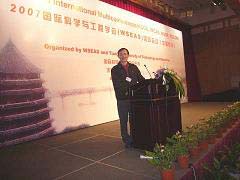
The Coffee, Tea, Sweets, Cakes and Pastries were available for the Guests. WSEAS thanks the Tianjin University of Technology and Education. The Banquet was superb, fantastic with many surprises.
Participants enjoyed a wonderful self-service buffet (more than 40 courses) with many attractions and chinese music and chinese dancers (see the photos above).
Several Excursions and short visits to the monuments of the town as well as of Benjin took place before and after the WSEAS Conferences.